
9 minute read
Passing the Torch (1980-2000
the only nationally-syndicated weekly newspaper column on astronomy. He
has merged art with science as a noted and accomplished sky photographer,
whose images have appeared in many electronic and print media, as well as in
art exhibitions. He won the Alumni Special Achievement Award in 2008.
Dr. Myron Campbell ’77, received a PhD in Physics from Yale University.
After a postdoctoral appointment at the Enrico Fermi Institute of the Univer-
sity of Chicago, he joined the physics faculty of the University of Michigan,
where he remains today. He has also served as Associate Dean for Natural
Sciences. He is a Fellow of the American Physical Society, and received the
Alumni Special Achievement award in 2000.
William H. Rickels ’77 worked for 37 years in systems engineering and
intelligence analysis, retiring as Chief Systems Engineer for the Ball Aerospace
& Technologies Corp in Fairborn, OH. Among other projects, he worked with
the Advanced Technical Exploitation Program for the National Air & Space
Intelligence Center at Wright-Patterson Air Force Base in Dayton, OH.
50
5 Passing the Torch (1980-2000)
Over the next two decades the department continued to develop, in partic-
ular building strength in research. The many benefits of research experiences
for undergraduate students were being increasingly recognized, and in addi-
tion the university benefitted generally from the oversupply of PhDs in many
fields that developed in the 1990s. The junior faculty hired in this period were
generally accomplished scholars, often with postdoctoral experience (at least in the sciences, where this is common), and who wanted to stay active in their
scholarly work and bring the excitement of research to students. However,
the start of this period was marked by some challenges, which required new
leadership to overcome.
With Bulthaup in Academic Affairs, the Department was down to two
full-time faculty members in 1980, Taylor (Chair) and Barnhart. Jack Taylor
departed Otterbein mid-way through AY 1980-81, leaving Barnhart to run the
department with only adjunct faculty. The resulting quality of teaching was
not good, especially in the general physics course which is taken by students
in a variety of programs.
Louis G. Arnold (theoretical nuclear physics; PhD, University of Kentucky)
was appointed as successor to Taylor in 1983. He came from OSU, where he
had been a Research Assistant Professor for several years. At this point the
departmental personnel were: Barnhart (Chair) and Arnold, with Bulthaup
51

Figure 5.1: Lou Arnold, Chair of the department from 1991 to 2005.
on leave. By now the effects of the reduced and fluctuating faculty were
being felt: in particular, the number of majors was declining, and the ongoing
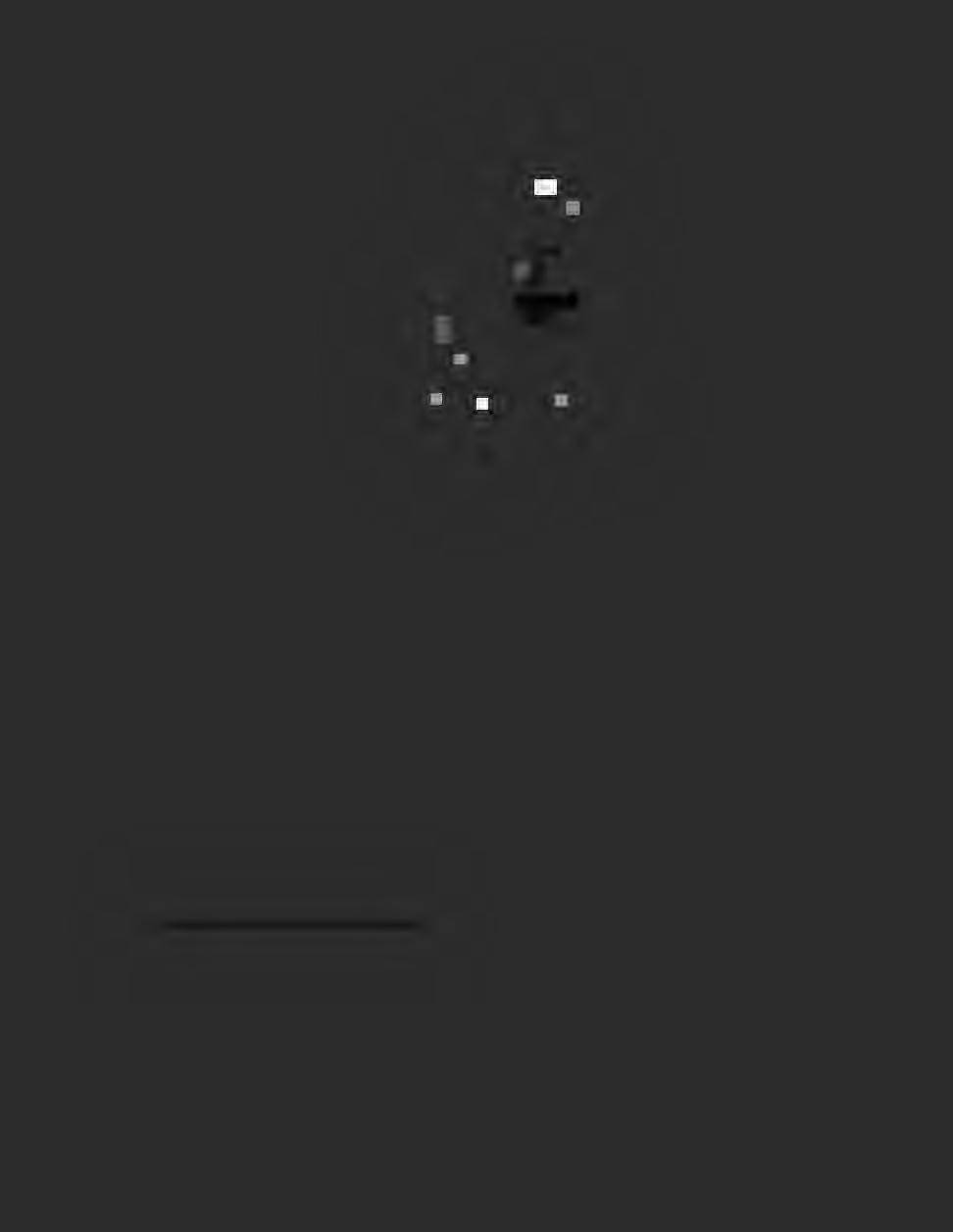
maintenance and development of the introductory laboratory had stalled. This
was “a disaster of broken equipment,” in Lou Arnold’s description.
Arnold set about rebuilding the introductory courses, and by 1988 he had
completely revised these courses and their labs, including implementing com-
puterized data acquisition systems in the lab. He also received an NSF grant
that allowed the purchase of microcomputers for the Advanced Lab.
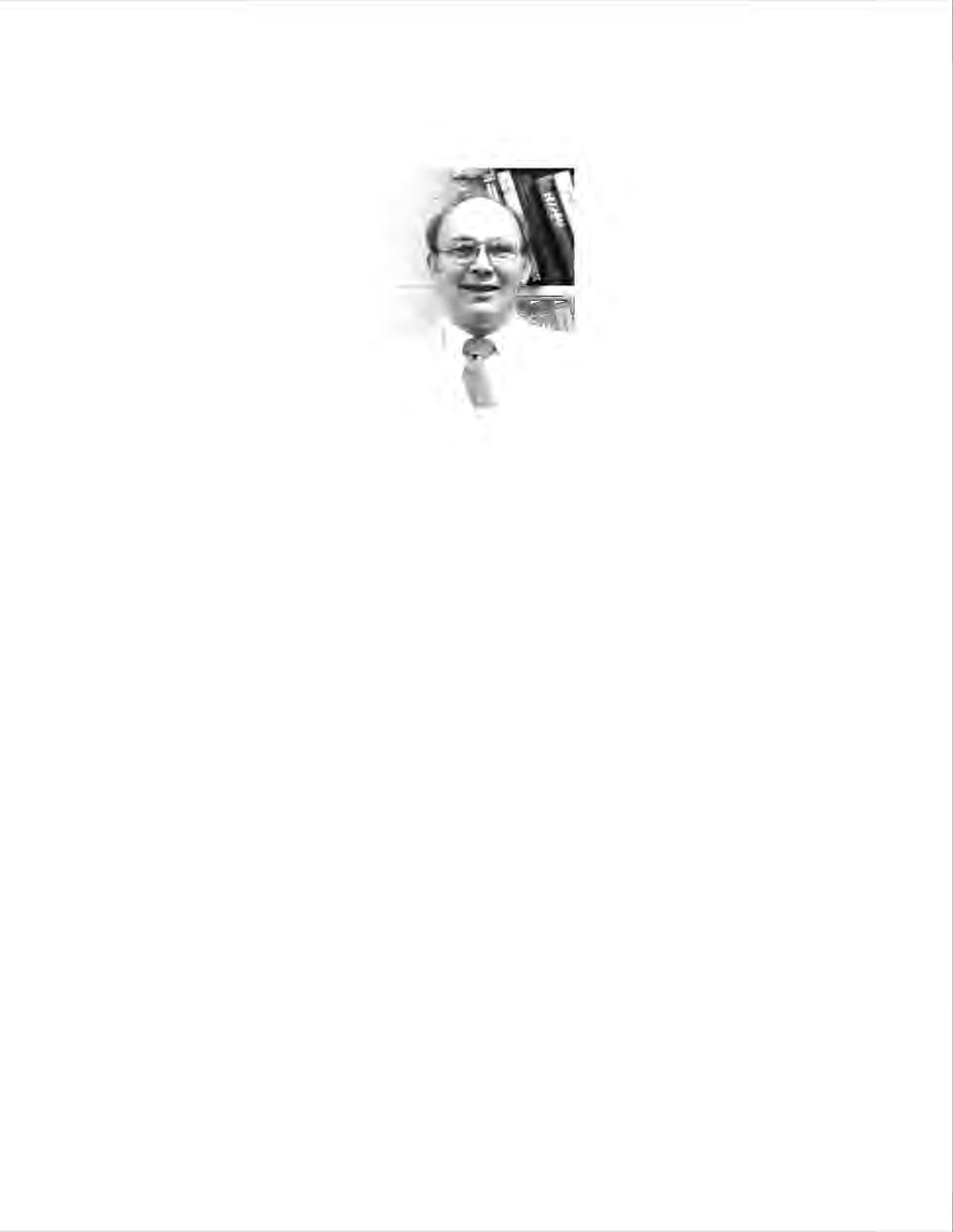
In 1982 the Weitkamp Observatory was finally rebuilt following the rooftop
fire of 1971. Phil Barnhart supervised the construction, designing a shed with a retractable roof to house a 14-inch Celestron telescope on a permanent mount.1
In 1983, Otterbein became the first member of the North American As-
1 This project was not without its hiccups. Barnhart had designed the shed with an aluminum frame and heavy duty wheels on the movable roof, of the kind used for aircraft hangar doors. The Service Department instead bought cheaper wheels, and built the rooftop frame out of iron. The cheap wheels collapsed under the excessive weight, and even after this was repaired, the electric motor that moved the roof – sized for aluminum rather than iron – would burn out every few years under the strain. This problem would not be corrected until a new shed was constructed in 2017.
52
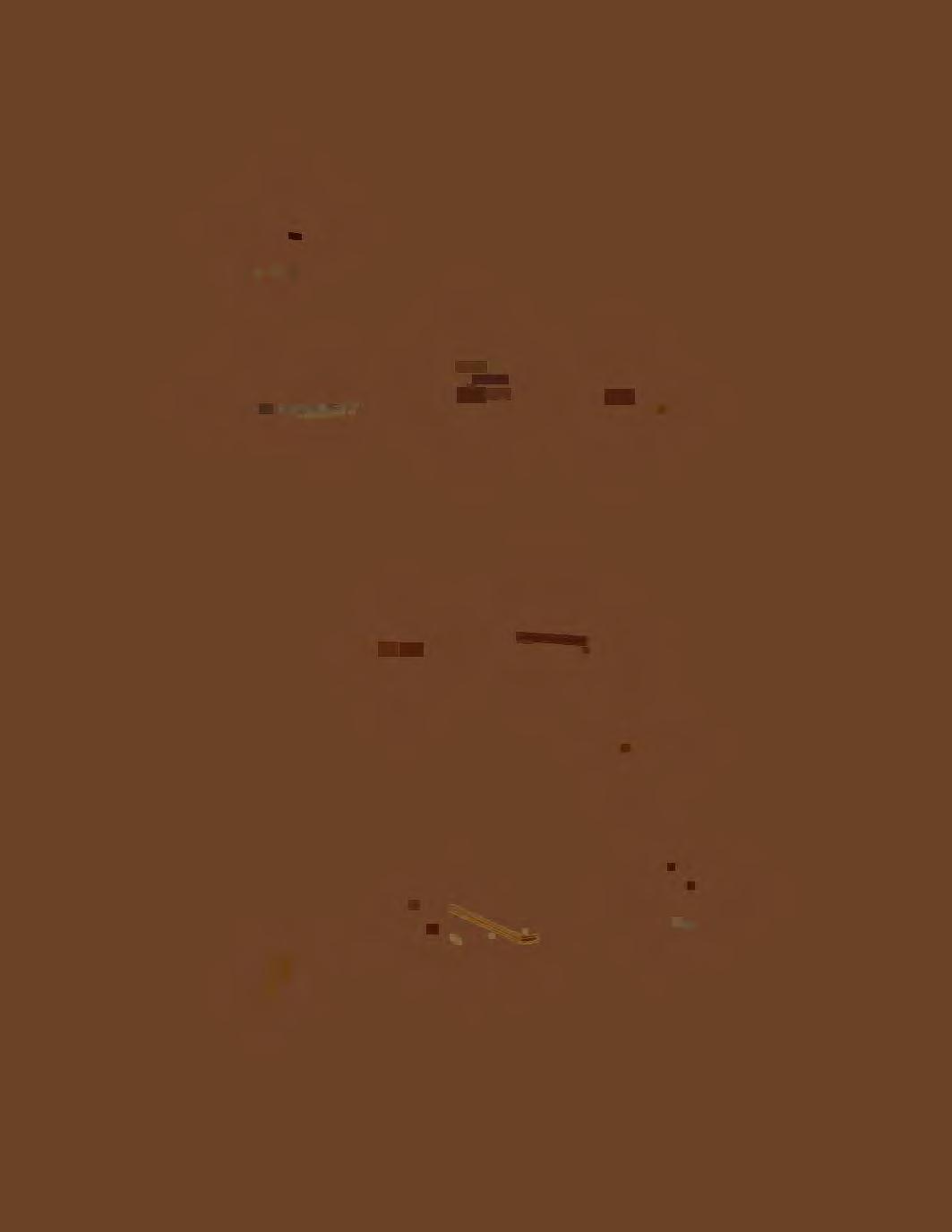
Figure 5.2: Rebuilding of the rooftop observatory in 1982.
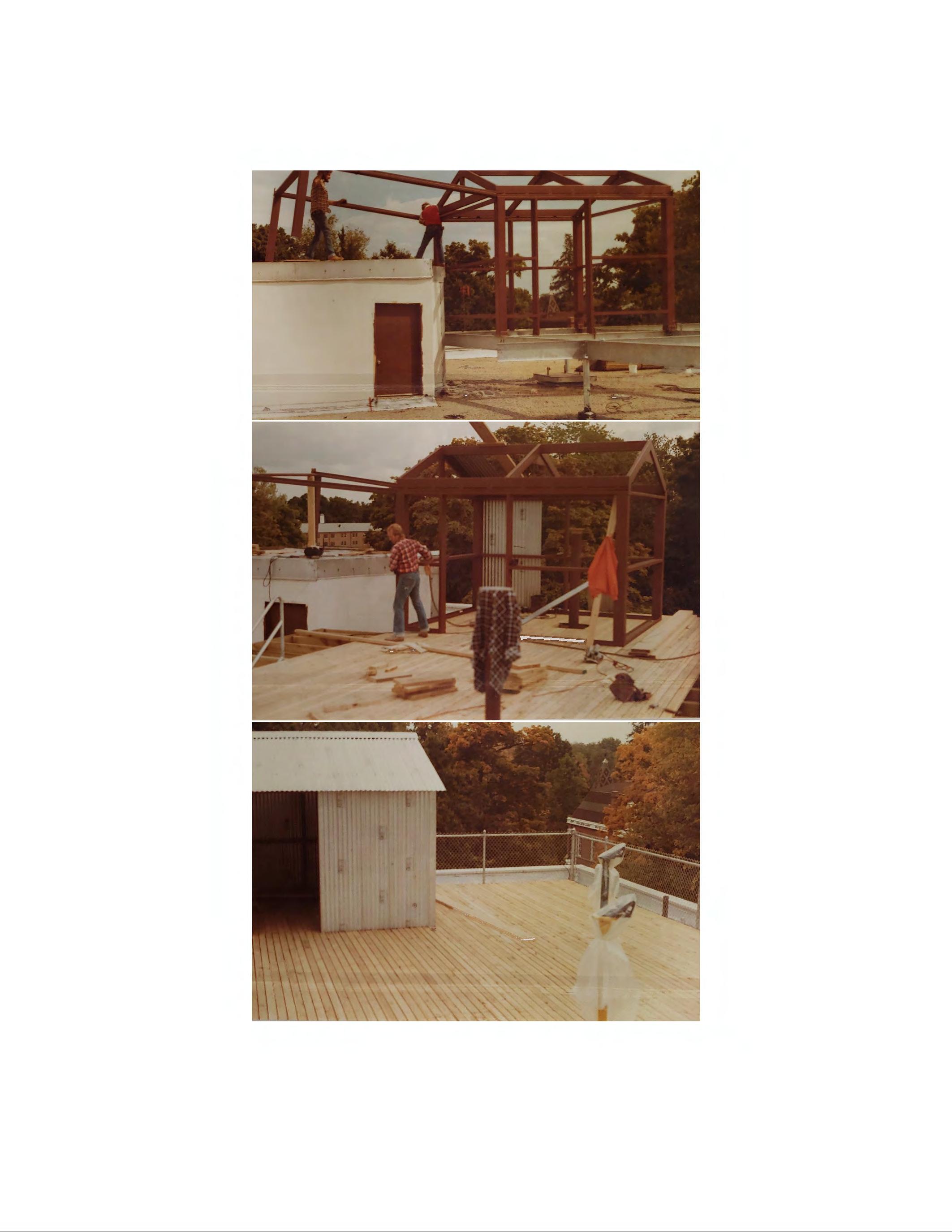
53
Figure 5.3: Phil Barnhart on the restored Weitkamp Observatory deck, 1982. The Planetarium dome is behind him.
troPhysical Observatory (NAAPO), a consortium of colleges and universities
created to operate the 110-meter “Big Ear” radio telescope in Delaware, OH.
Phil Barnhart took a leadership role in the organization and served as its first
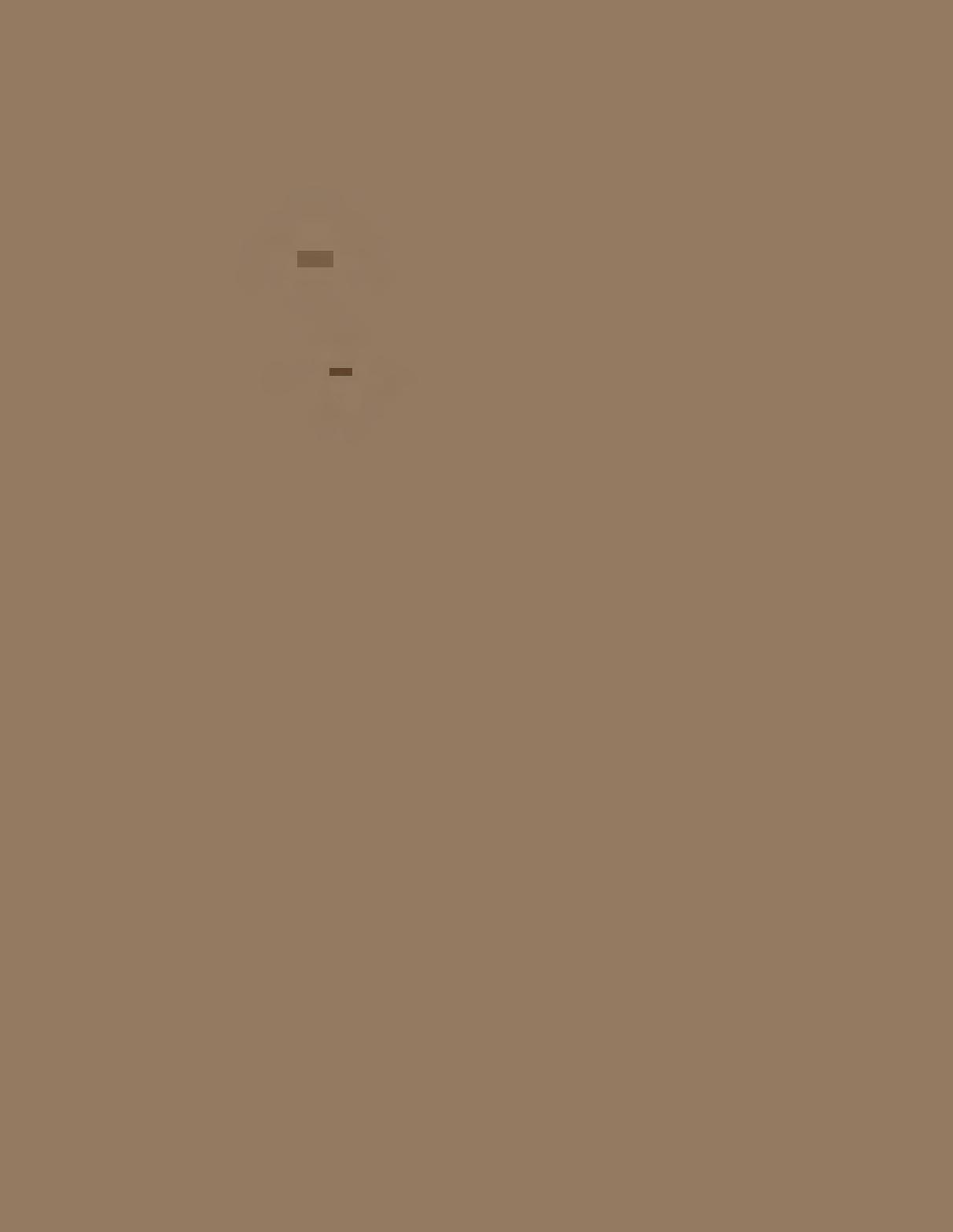
Director. Other consortium members were Denison University, Ohio Univer-
sity, Oberlin College, the College of Wooster, Manchester College (IN), and
St. Mary’s University of Halifax, Nova Scotia.
The Big Ear telescope – officially the Ohio State University Radio Obser-
vatory (OSURO) – was constructed from 1956-61 and began collecting data
in 1963. The observatory completed the Ohio Sky Survey in 1971, and from
1973-1995 it was engaged in the search for extraterrestrial radio signals, mak-
ing it the longest running SETI project in history. In 1977, Big Ear recorded
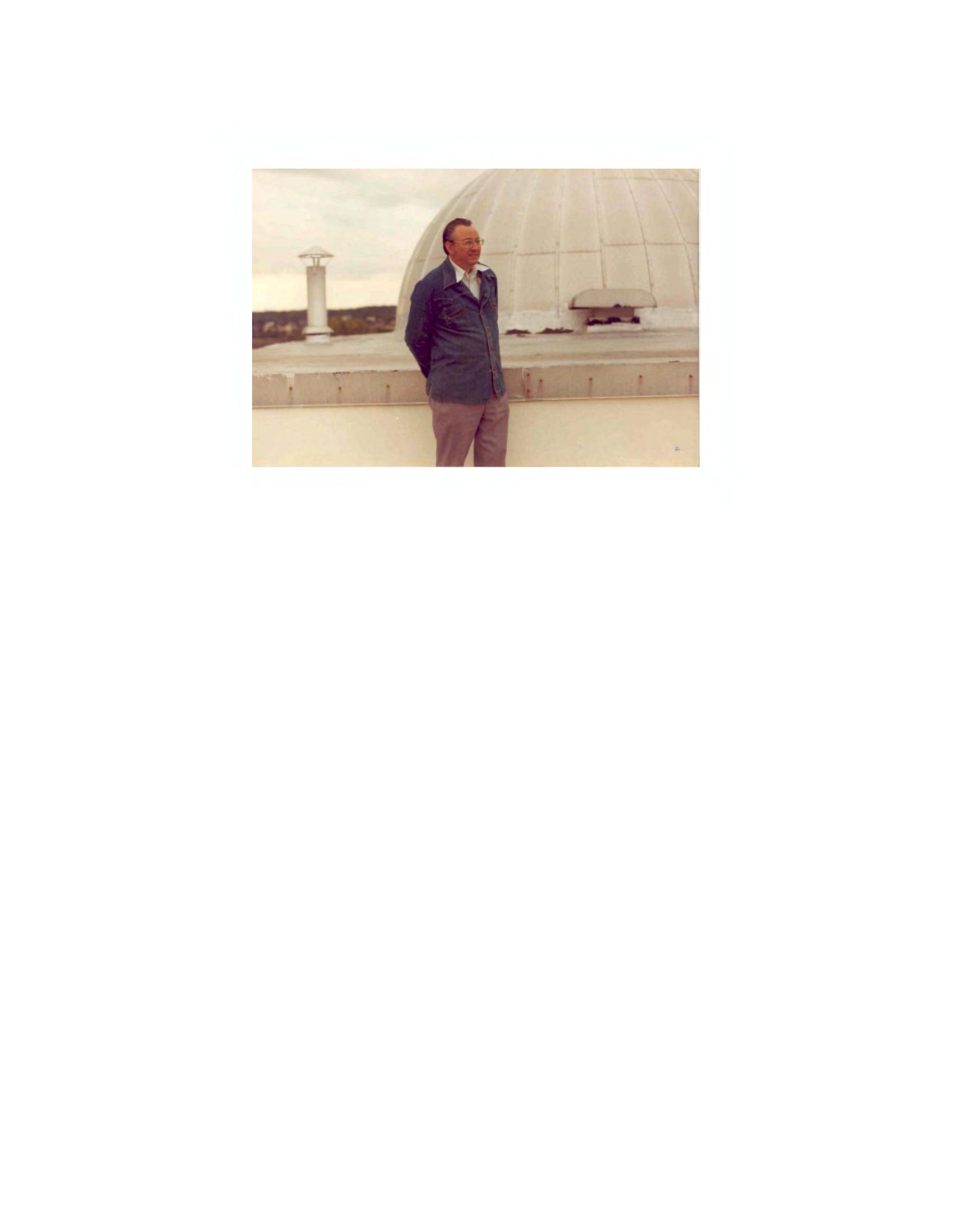
the famous “Wow!” signal, a strong radio signal that appeared to come from
the direction of the constellation Sagittarius and that had certain features ex-
pected of signals from an advanced civilization. The signal was never detected
54
again, and its ultimate origin is still unclear.
In addition to the consortium members, many local volunteers donated
time and funding to support NAAPO. According to Barnhart,
Important contributions were made by an ever-evolving team con-
sisting of eighth grade middle school students; secondary teachers
and students; college research and teaching faculty and staff; un-
dergraduate physics and engineering students; business, industry
and professional people, (self-employed and organization-employed);
retired technicians, engineers and scientists.
The facility provided a unique opportunity for student research projects, and
over the years student interns participated in data analysis as well as mainte-
nance and hardware upgrades.
The land on which Big Ear was constructed was owned by Ohio Wesleyan University, and in 1982 they sold it to commercial developers.2 Under
NAAPO, the land was leased from the developers and the telescope continued
to operate from 1985-1997 as an educational and research facility. The lease
was terminated at the end of 1997 and the telescope was dismantled in early
1998.
In 1987 the Science Lecture Series (initially called Science 2000) was es-
tablished on the initiative of Phil Barnhart and Professor Jerry Jenkins of
the Department of Chemistry. The George W. and Mildred K. White Science
Seminar Fund sponsors this annual program in which a scholar of stature is

2 These planned to build houses and expand a neighboring 9-hole golf course, prompting Barnhart’s quip that Big Ear was the world’s only par 72 radio telescope.
55
1 2 1 16 1
1 l] 1
4
1 11 3 1 - \ \0~· ~ J 5 2 -41 1 ~l l.2 l 2 1 3 31 3 111 31 21- 1 r J/ 7 1 11 1 1 1 14 1 113 2 11 1 3 1 1 1 4 1 1 1 11 4 -1 1 -1-1 -1-1-1 1 1 2 1 1 11 1
-1
14
Figure 5.4: (Top) “Big Ear” as seen from the air; (Bottom) The famous “Wow Signal,” received in 1977.
brought to campus for a public lecture and interactions with students. Over
the years many notable scholars have participated, including several Nobel
Prize winners.
Bulthaup returned from Academic Affairs to the Department in 1988 after
a new VPAA was hired in an external search. The Departmental faculty thus
returned to its normal level: Barnhart (Chair), Bulthaup, and Arnold. In 1991
Arnold took over as Chair, to provide continuity in the anticipated retirements
of his more senior colleagues.
The first of these was Bulthaup, who retired in 1993. Michael Pettersen
56
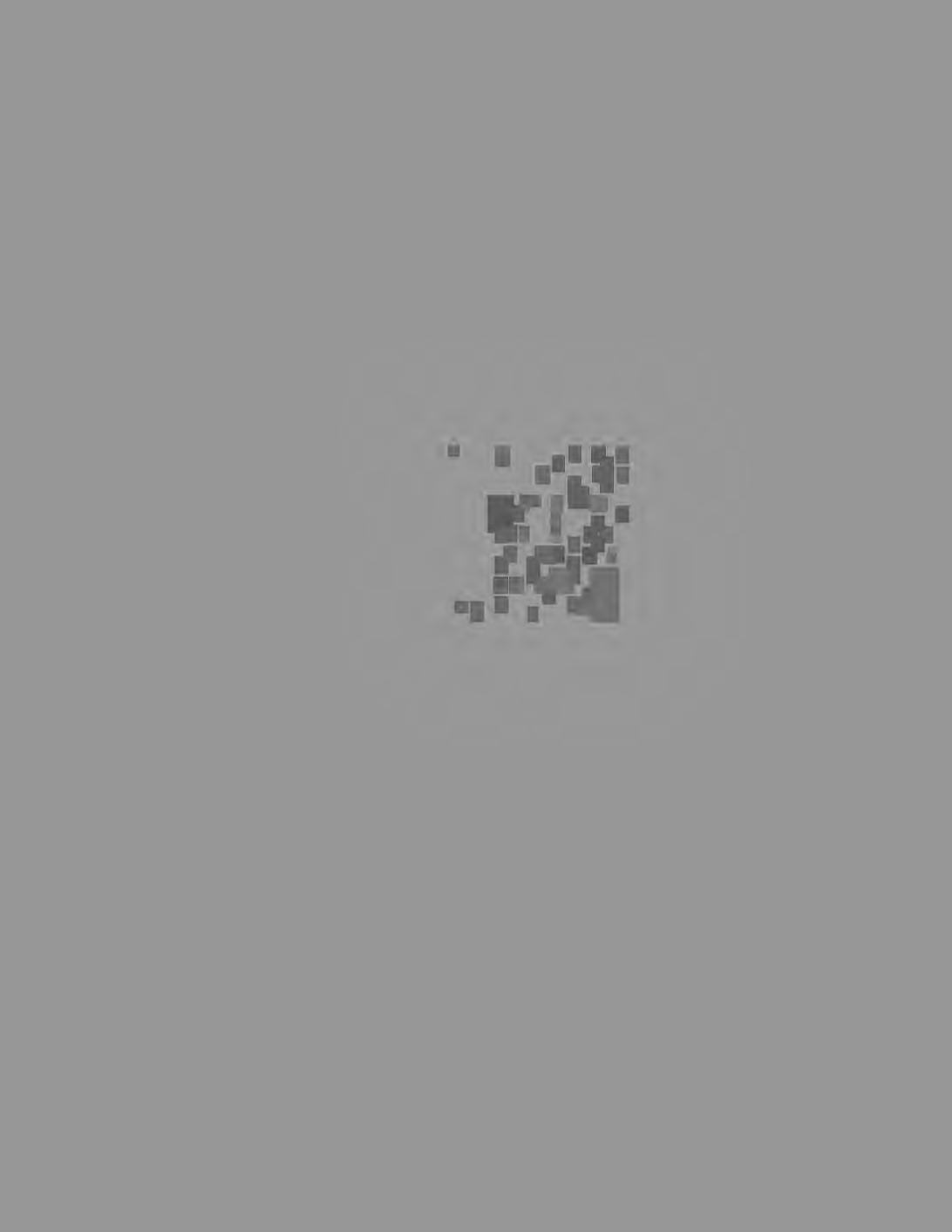
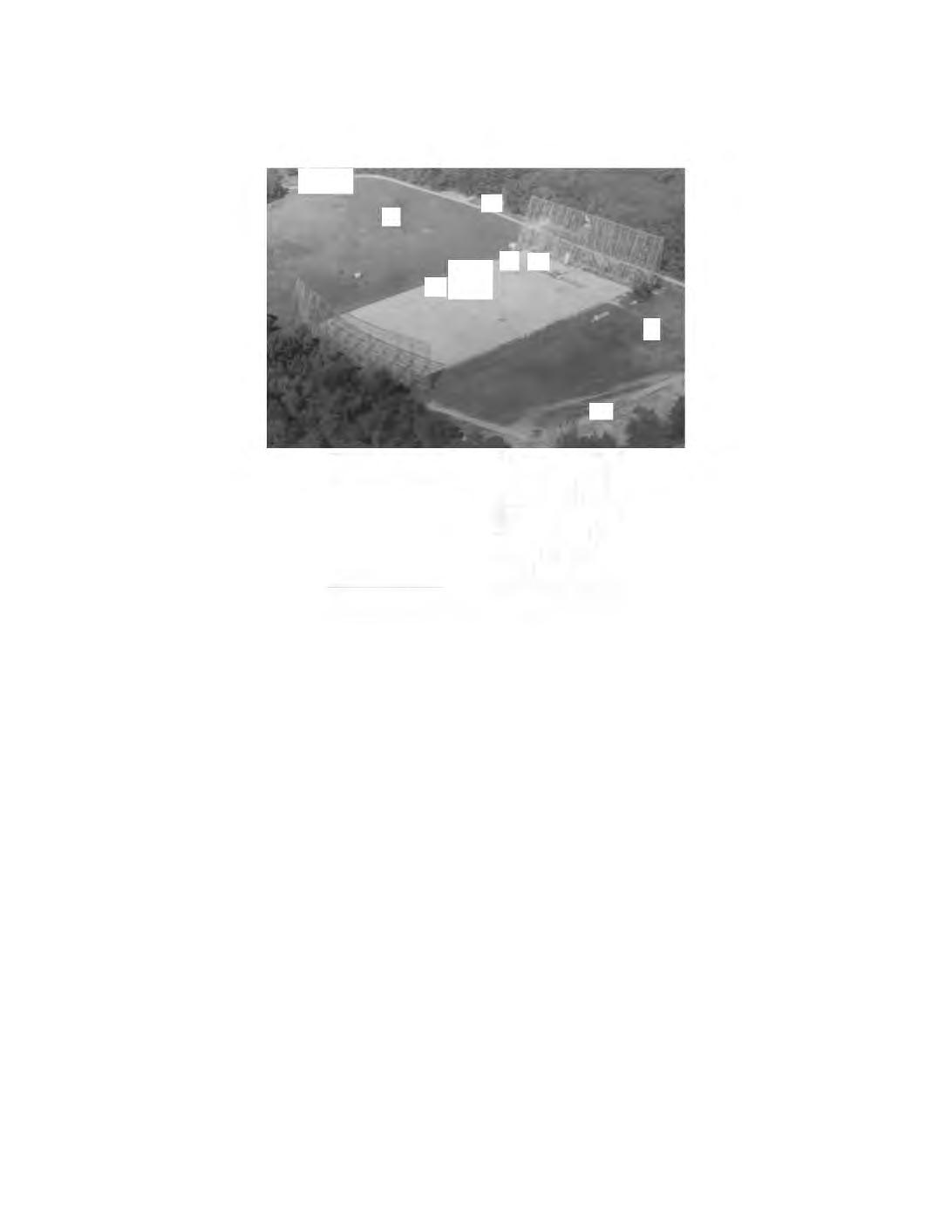
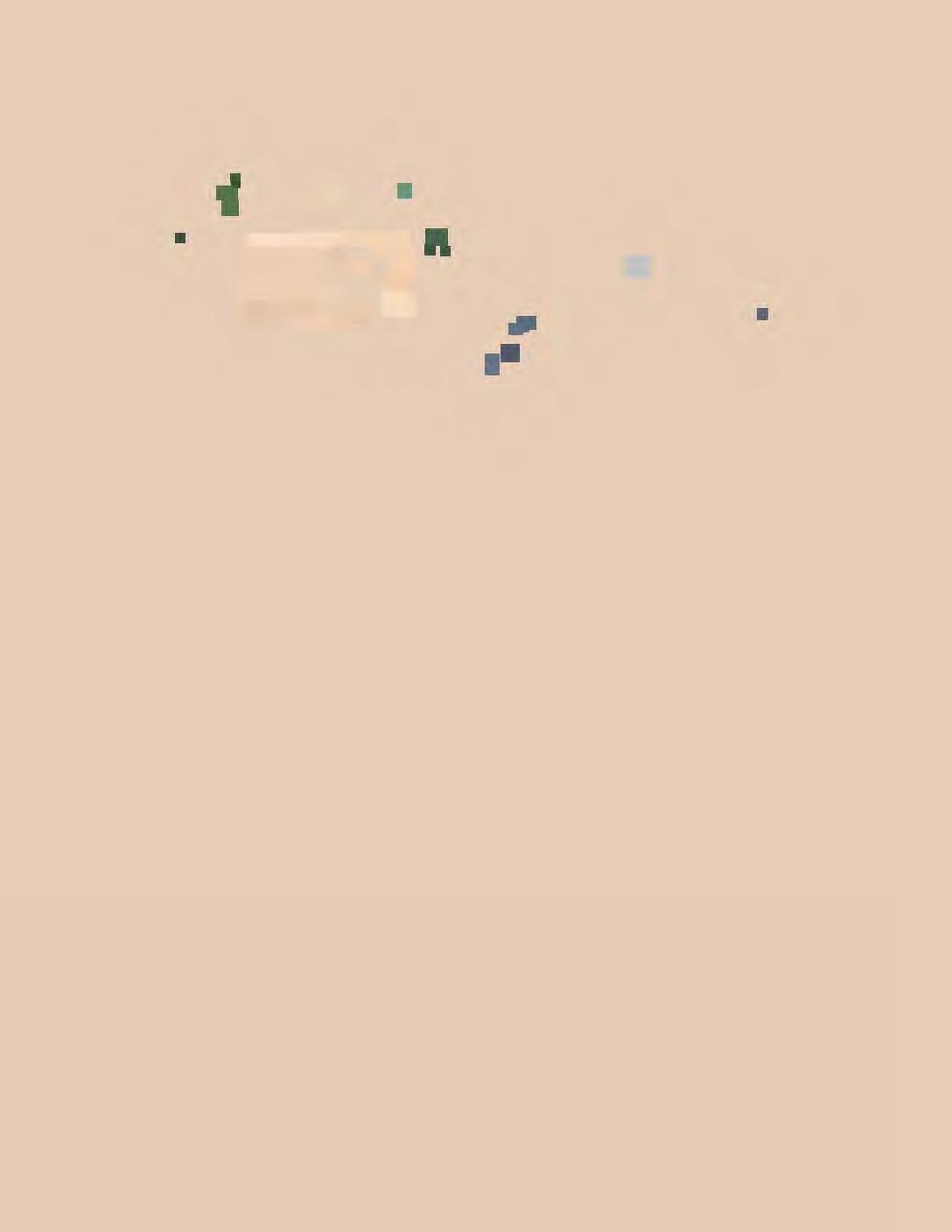
Figure 5.5: (L) Historical marker for the “Big Ear” radio telescope, dedicated in 2000, (R) Barnhart as Master of Ceremonies at the dedication.
(experimental condensed matter physics; PhD, California Institute of Technology) was appointed as his successor.
Barnhart then retired in 1995. His line was filled for 1995-96 by James
Castiglione (PhD, Ohio State University), and then permanently in 1996 by Eric Werwa (materials science and engineering; PhD, Massachusetts Institute of Technology). At this point, the departmental personnel were thus: Arnold (Chair), Pettersen, and Werwa.
In 1991 the Arch B. Tripler Solar Observing Facility was established.
Tripler had long been a friend of Barnhart, and on his death in fall 1990 he
bequeathed a variety of astronomical equipment and books to the Weitkamp
Observatory. Among the equipment was a unique telescope dedicated to solar
observing.
In 1993 the modern 3+2 Dual Degree Program was established, a part-
nership with Washington University in St. Louis and Case Western Reserve
University. This program provided a way for students to pursue the study of
57
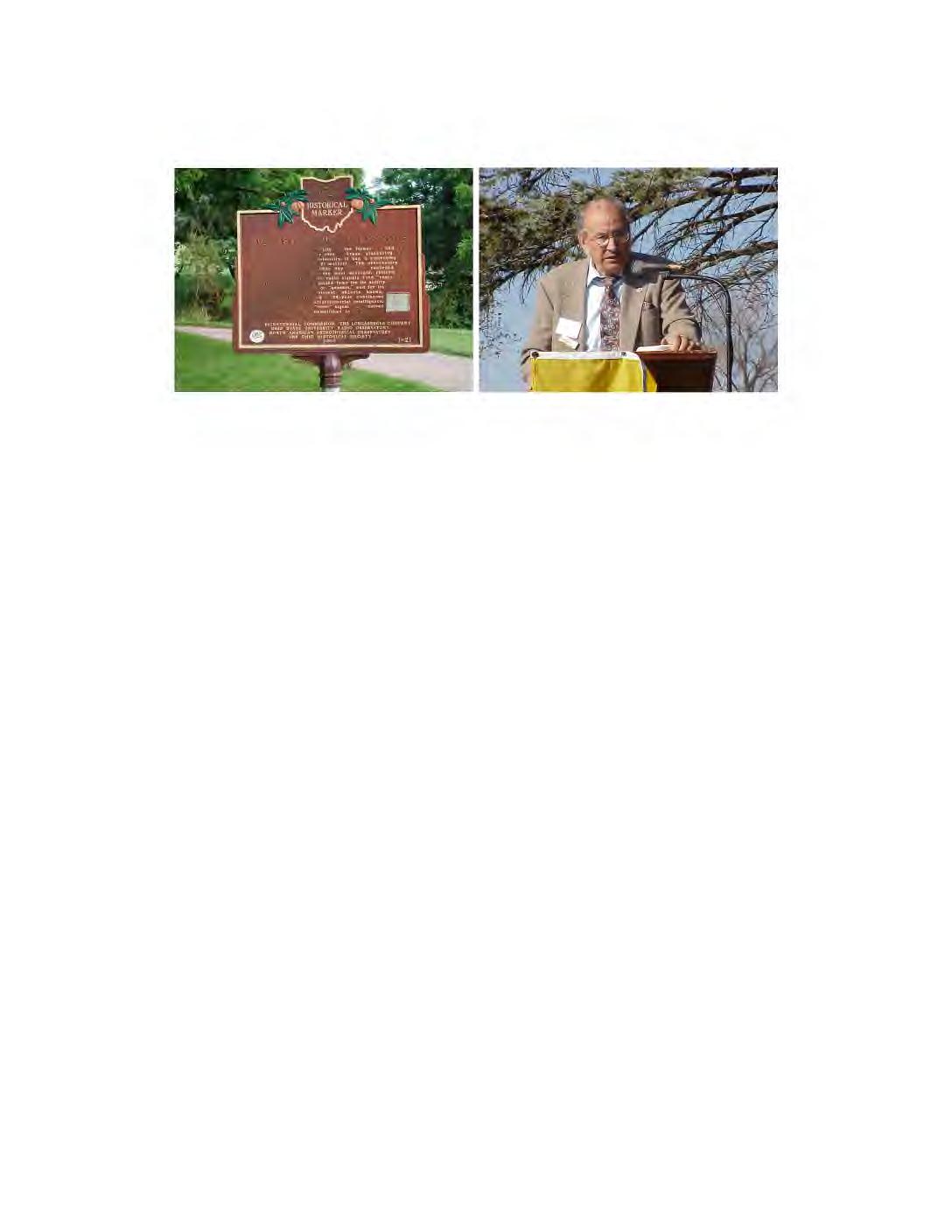

Figure 5.6: Mike Pettersen and unknown student.
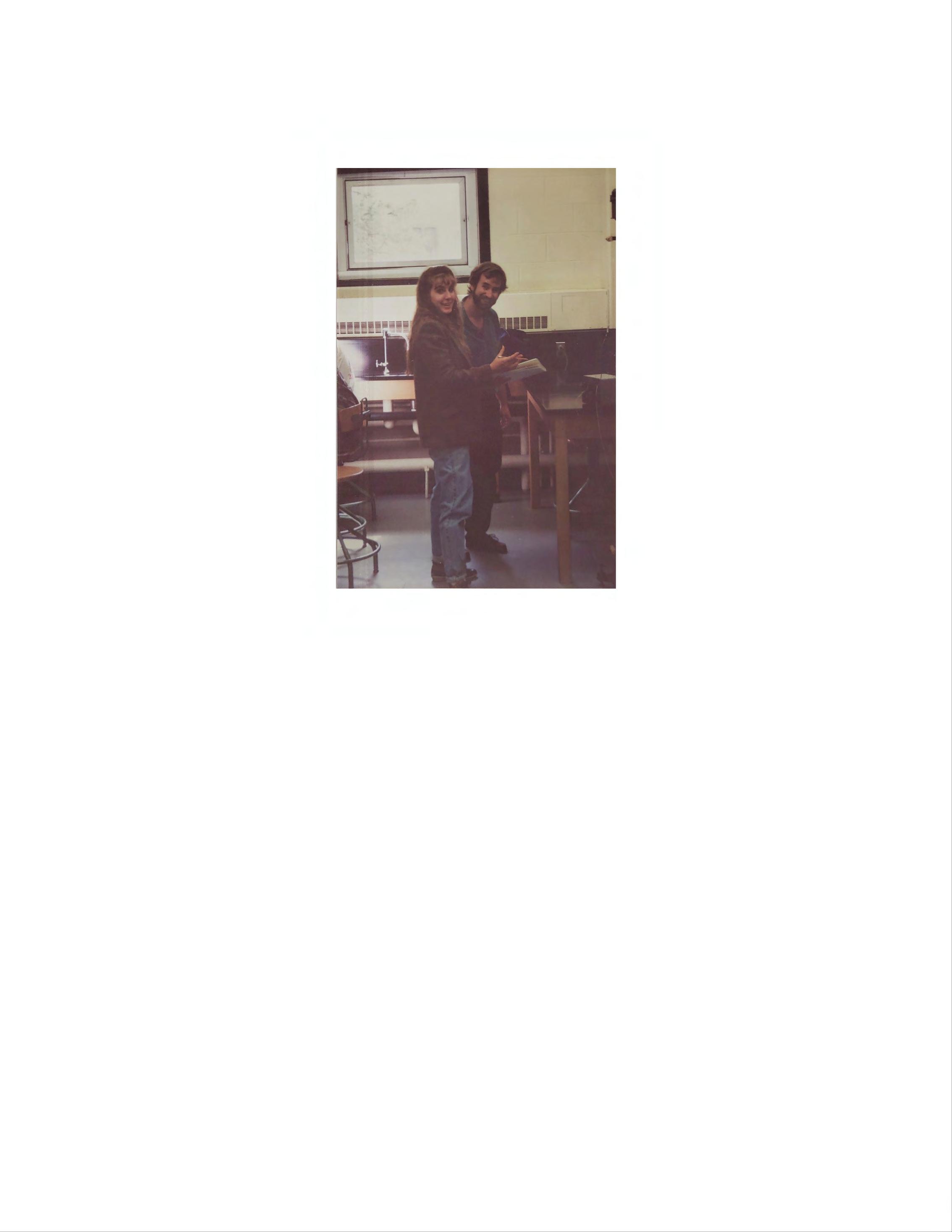
engineering at Otterbein, and was similar to the program from the 1950s. The
student would spend three years at Otterbein and two at the partner institu-
tion, earning a BA in Physics from Otterbein and a BS from the partner in
whatever flavor of engineering they chose to pursue.
In 1994, the Science Education Discovery Center was opened in the Schear-
McFadden Science Building. This was a joint initiative of Lou Arnold, Paula
Knight of the Department of Education, and Alison Prindle of Integrative
Studies, and provided a state-of-the-art facility for the training of pre-service
and in-service science teachers. Generous support from Battelle Memorial
Institute and the Harry C. Moores Foundation was instrumental in creating
this modern learning space.
58
Figure 5.7: Physics faculty in 1998: (L to R) Eric Werwa, Lou Arnold, and Mike Pettersen. Image from 1998 Sibyl.
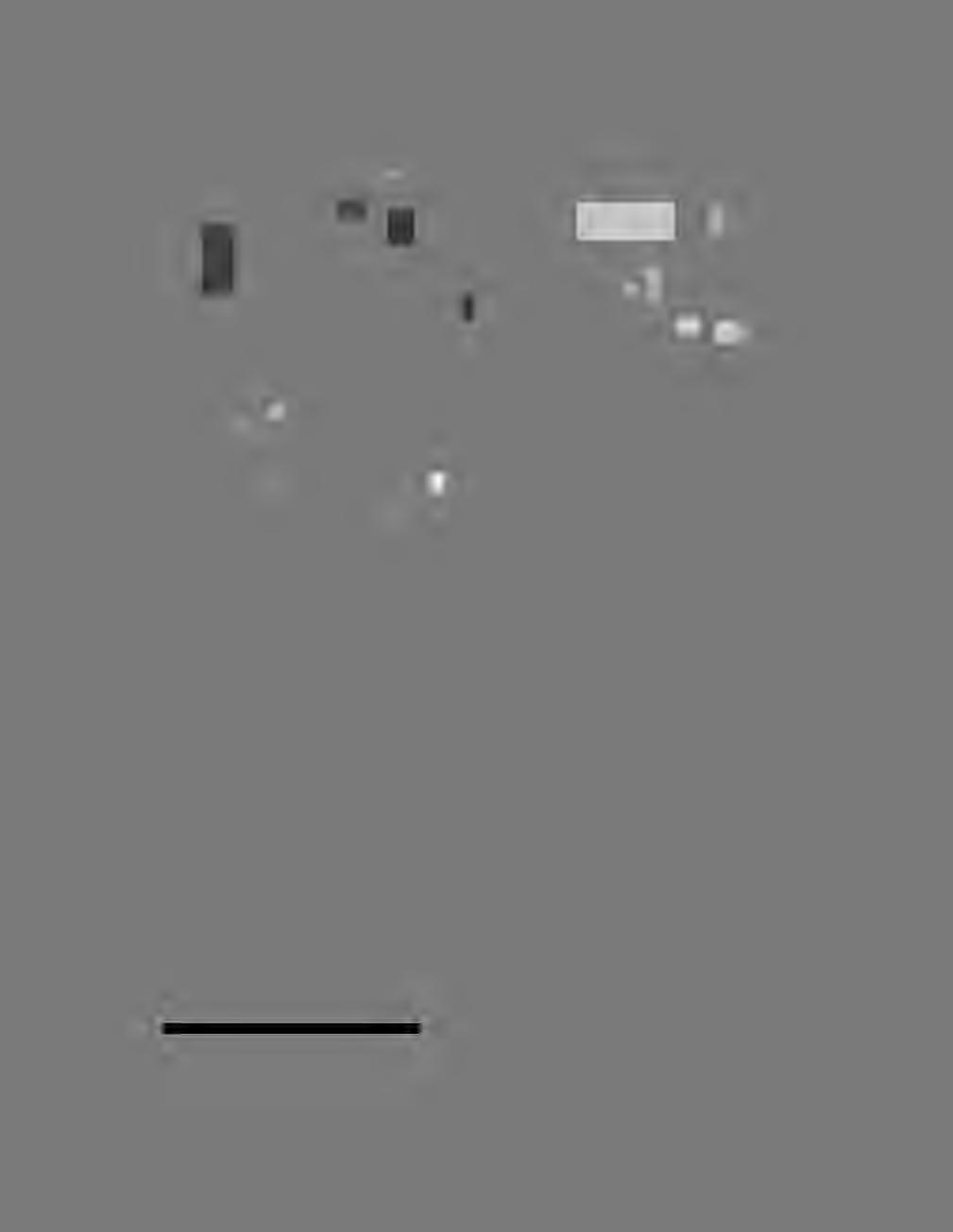
Pettersen was awarded an NSF research grant in 1995, the first such award3
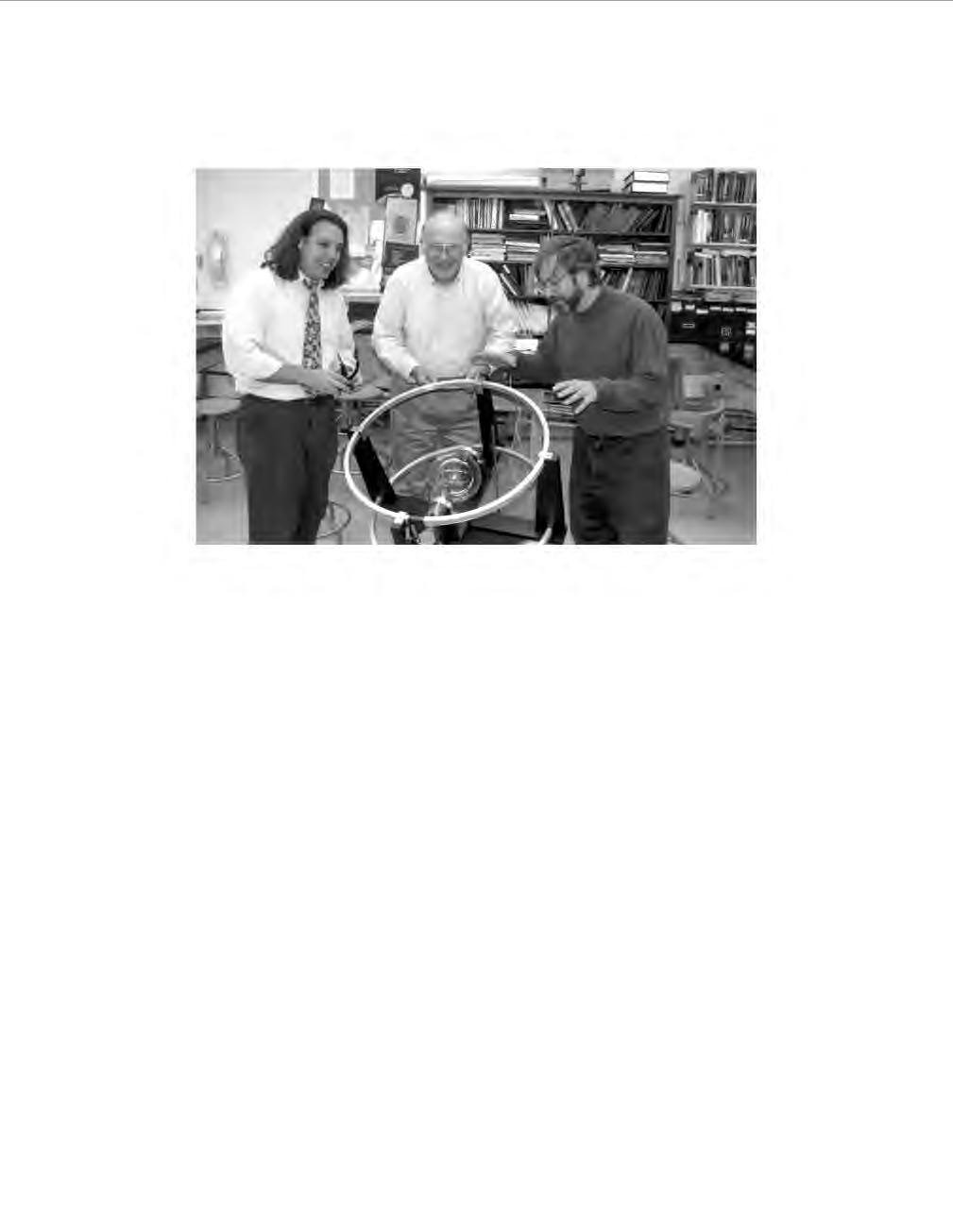
at Otterbein: Molecular Dynamics of Rough Surfaces in Adsorbed Films (RUI program, $95,000 awarded). Like those that would follow, this grant was aimed
at building laboratory infrastructure and supporting undergraduate student-
faculty research.
By the end of the century, the Department had thus weathered some diffi-
cult times and returned to a position of strength under the energetic leadership
of Lou Arnold. With an excellent young faculty focused increasingly on build-
ing opportunities for student-faculty research, it was well positioned for the
future.
3 I.e., a grant awarded under the regular research directorates of the NSF, as opposed to grants for educational initiatives or equipment.
59




